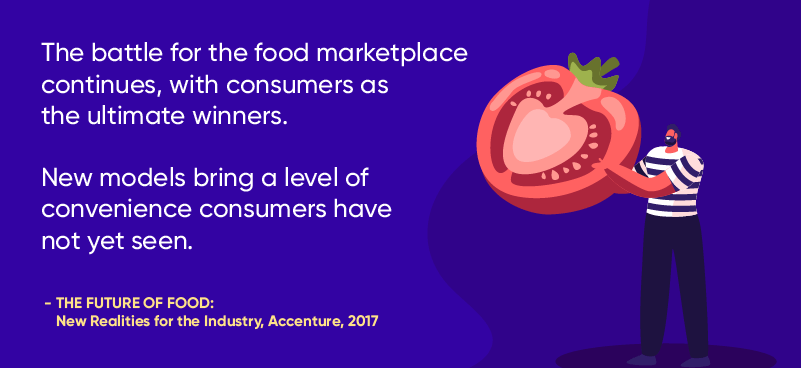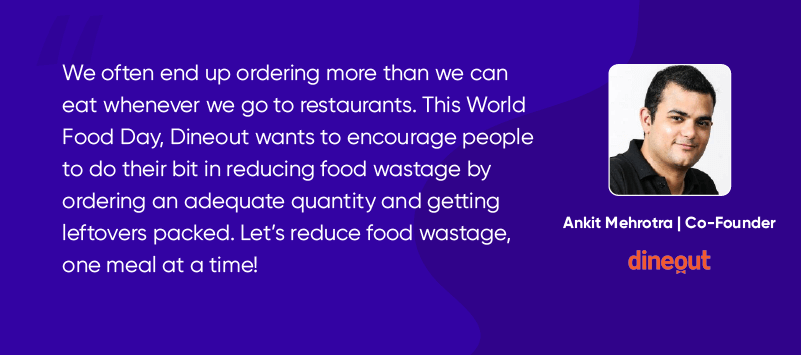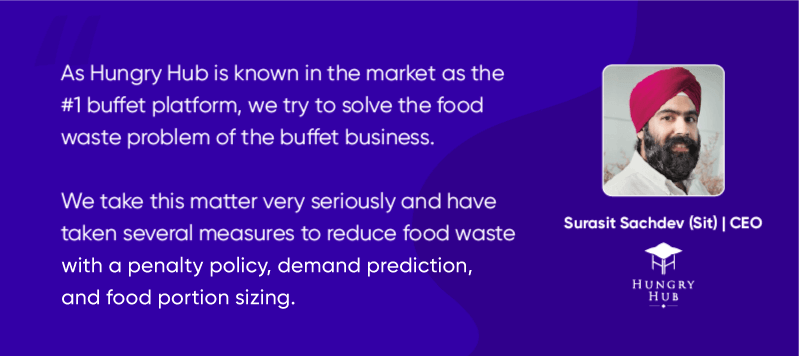Every year, the UN’s Food and Agriculture Organization (FAO) hosts World Food Day, an educational and celebratory event focused on achieving #ZeroHunger around the world.
But it’s about more than that.
It’s about sustaining biodiversity, encouraging healthy diets, fighting climate change, and reducing obesity.
Communities around the world celebrate World Food Day in many different ways. This year, for the October 16th celebration, Rome is hosting displays, lectures, and a cinema-and-gastronomy night. Ohio State University is holding a three-day event full of talks, a food fair, and farm tours. In Nova Scotia, you can share vegetables and tour community gardens.
Wherever you are, there’s a good chance that a World Food Day celebration will be taking place nearby. The FAO’s Events page is a great place to find local events and support the movement to end worldwide hunger.01
A Changing Landscape for Food and Food Tech
World Food Day highlights some important changes in the modern world. And not just in food production—consumption is an important part of the event, too. With increasing options for fast food, delivery, and pre-packaged meals, modern consumers are faced with lots of choices.
In many cases, they’re turning to mobile for those choices. NPD’s recent Delievery Digital Convenience Report 02 and equity research firm UBS03 put out a thorough look at the food delivery world and highlights the following stats. 
In an age when people want everything as quickly as possible, food tech brands provide them with app-based convenience to choose between comfort foods or more environmentally friendly, healthier options.

No matter what users choose, though, it’s clear that they’re happy to continue ordering food from their phones. According to our food tech industry benchmark report, 35% of new food app users order a meal at least once within the first month of installing a food app.
The report also highlights that on average, users launch food apps 10 times per month—multiply that by three or four different apps, and it’s clear that mobile users are relying heavily on food apps to get quick access to meals.
And companies are doing their best to keep it that way. Research has shown that certain marketing tactics are highly effective: personalizing notifications, for example, results in a 50% boost in click-through rates and including emojis in messages is an effective way to get people to open food apps. Proactive re-engagement campaigns use machine learning to reduce app churn.
Still, the food tech industry only sees an average of 8% stickiness. Users bounce between apps, delete those they don’t use, and try new options. These numbers clearly show that food tech companies need to continue innovating—and using proven marketing tactics—to drive revenue on fast food.
More Competition for Food Apps
No matter how successful any given food app is, it will undoubtedly face strong competition.
A report by Accenture, states that 4 out of 5 shoppers visit three or more channels to fulfill their food and household shopping needs.04 These include entirely new businesses based on providing services with food.
To differentiate themselves from their competitors, marketers spend huge amounts of time and money designing great user experiences for their apps. They gather information about their target audiences and how they interact online in order to acquire more users. And they do everything they can to make sure those users start using their app as quickly as they can.
Apps That Break Away from Trends
But there also those apps that are blazing their own unique paths away from the competition.
As millennials become increasingly aware of the environmental and social impact of their buying choices, food tech companies are taking notice. And have now launched a batch of food apps that go beyond simply ordering food.
- Look at Eat Purely, a new food delivery app in Chicago. It offers chef-made, fresh meals delivered to your door within approximately 20 minutes. Users can choose from a variety of healthy choices and the meals are delivered in biodegradable containers with cutlery only included upon request to cut down on waste.05
- Freshly is another chef-cooked meal app that offers gluten-free, all-natural meals to users around the US.06
- Territory has a similar model, but shares its profits with Feeding America to provide food to hungry people around the country.07
There’s no question that sustainable food apps are on the rise. And with World Food Day just around the corner, they’re worth taking a look at.
Moving Food Tech Forward
Organizations like the FAO are working hard to improve the world’s food production and consumption. They’re fighting against hunger, obesity, climate change, and unsustainable farming. And as people pay attention to these messages, the digital food industry is helping users find options that are better for the planet without sacrificing quality or the ability to enjoy a quick meal.
In the future, we expect AI bots to work together, sharing vast quantities of data to optimize inventory, maximize delivery efficiency, handle customer interactions, drive recommendations, and more.
Want to see how your food app’s onboarding, engagement, and retention compare to industry benchmarks? Be sure to check out our food app benchmark report and see how we helped Faasos accelerate their conversions by 7%.
Advanced Customer Insights and Marketing Automation for Food Tech Brands
hyper-personalized campaigns.
Mrinal Parekh 
Leads Product Marketing & Analyst Relations.Expert in cross-channel marketing strategies & platforms.
Free Customer Engagement Guides
Join our newsletter for actionable tips and proven strategies to grow your business and engage your customers.















































